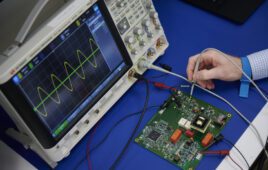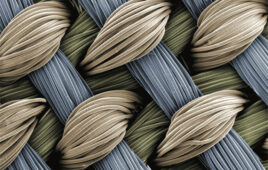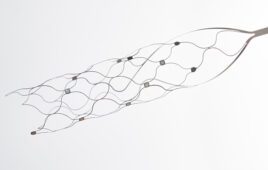Reliability is crucial in medtech product design.
Mitch Maiman, Intelligent Product Solutions

Products designed by Intelligent Product Solutions include the AdhereTech smart pill bottle, according to IPS.
Image courtesy of IPS
Medical technology product development combines the challenges of developing high-reliability commercial equipment with a regulatory landscape and discipline similar to DoD/aerospace systems.
The need for high reliability in medical technology products is obvious. Even in the lowest risk Class I devices, reliability is imperative. With Class III devices, the risk profile is so high that the highest standards of a rigorous design, verification and validation regimen are required.
Here are four unique challenges embodied in the development of technology products with medical applications:
1. The supreme need for human factors considerations
The issues around human factors reflect the criticality of risk reduction in medical devices. Mistakes from sub-optimal attention to human factors present the possibility of safety issues impacting treatment, data acquisition and treatment delays.
Medically-oriented processes deal with people and the user interface and experience must consider the patient and the practitioner. Practitioners are busy people and not necessarily looking for the latest and greatest new technology, so critical functions need to be obvious. In “the heat of battle,” medical practitioners need to be able to work with the technology in a way that is not cumbersome or confusing. Many products in the medical technology space fail because the practitioners simply do not want to use them or find that the products interfere with their processes.
If the device interfaces with the patient, it is important to pay care to comfort. Ease-of-use and ease-of-learning considerations are also important. Instructions need to be clear and concise, with little room for interpretive error.
Additionally, one should test human factors early and often to ensure the interfaces’ goals. It is one thing to build sophisticated computer models. It can be another thing to put actual prototypes in the hands or in front of those intended to interact with the technology. Often, one can discover subtle issues in this prototype phase that cannot be detected digitally.
2. Balancing process speed with requirements and risk management
Most medical technology companies are working in a competitive environment. Capital can be scarce, and time is money. Project planning must always be cognizant of the timing required in commercialization, without compromising the relevant processes and achievement of the required goals in efficacy and safety (along with the regular tradeoffs related to cost, size, weight, etc.).
3. Picking the right risk classification
Risk classification is one of the most crucial decisions early in the project. Particularly when working with early-stage companies, there is not always a clear understanding of the risk classification levels or the implications of avoiding this entirely by developing a process that is “health and wellness” oriented.
In our experience working with startup companies, when the management team realizes the impact of a higher-risk product definition, they will sometimes flip to a consumer product standard with no medical claims. When they proceed down that path and then flip back to an FDA-certification goal, the cost can be substantial as the consumer product development process will not usually generate the artifacts necessary for an FDA certification. The result means going backward to create requirements, produce documentation (risk analysis and mitigation plans) and perform the verification and validation testing (along with reports) to prove efficacy, usage profiles and safety.
Another issue often seen is use-case expansion. In an effort to secure a wider market segment, changes of this nature can change the risk profile and, hence, the device classification.
4. Clearly defining requirements
Both mature and early-stage companies face challenges around defining requirements. It is crucial to start medical technology product development with a clear definition of requirements. These include delineating the intended product claims, identifying the target practitioners for the use of the product, environmental constraints, and, of course, assessing the appropriate risk profile to drive the class designation. Even more critical than in commercial or consumer products, failure to define requirements early and clearly results in burning capital and lost time. Changes in requirements mid-stream on projects may impact the architecture, risk profile and validation/verification plans.
Medical technology product development boils down to paying careful attention to the requirements, which may be a bit more (or a lot more) rigorous than in most other industries. In the end, it’s about understanding the physics of the problem. If one abstracts the product to be designed and engineered, you need to apply the same skills related to the fundamentals. As in any industry, there are nuances related to development processes, regulatory requirements, and test methodologies. It is important to have an experienced medical product design partner and team to succeed.
Mitch Maiman is the president and co-founder of Intelligent Product Solutions (IPS), a product design and development firm with a specialty in medical technology. Always espousing a hands-on approach to design, he holds a portfolio of numerous United States and international patents.
The opinions expressed in this blog post are the author’s only and do not necessarily reflect those of MedicalDesignandOutsourcing.com or its employees.




